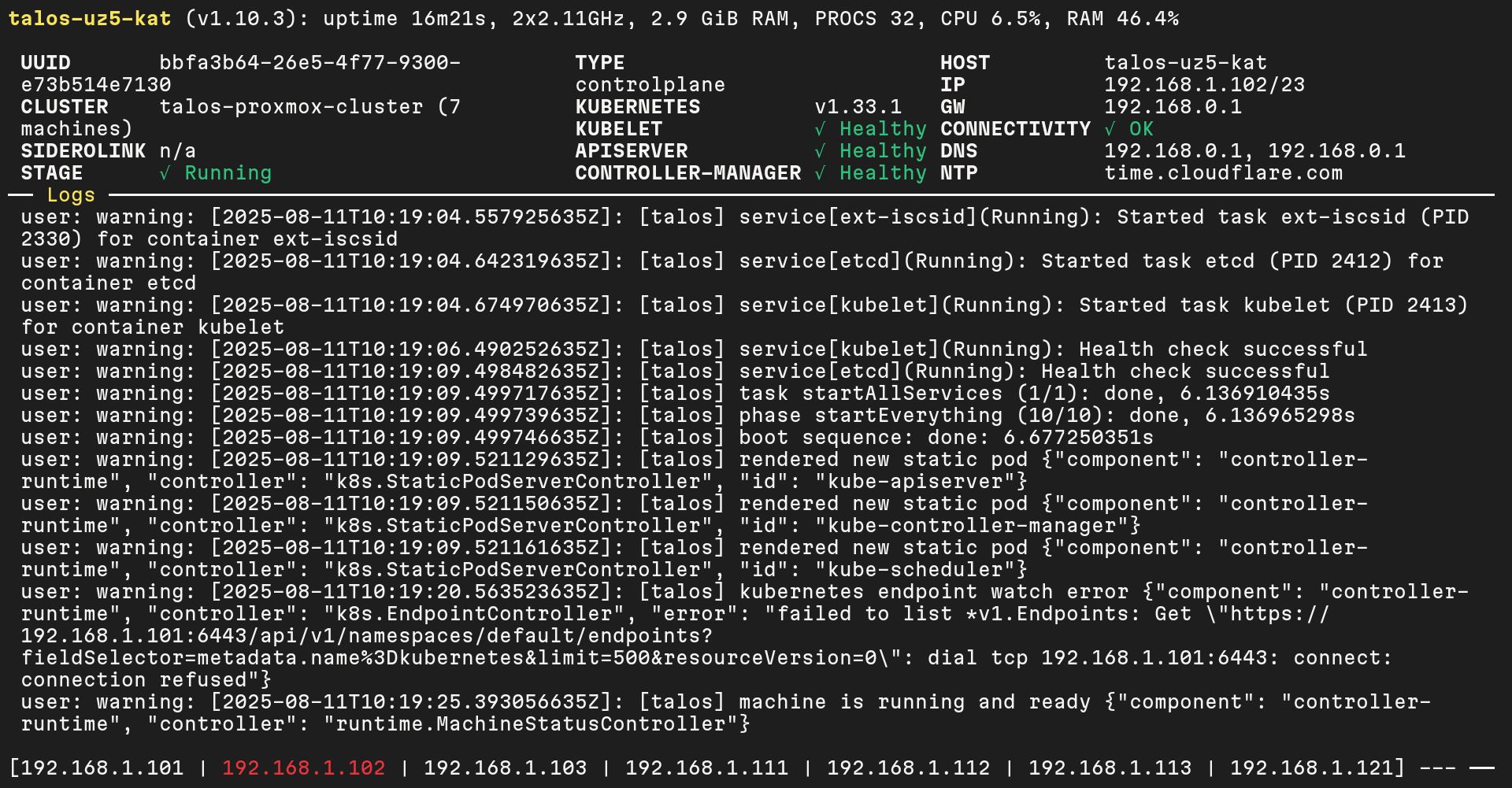Talos Linux: Kubernetes setup the right way

In this article I am going to talk about the advantages and disavantages that Talos Linux offers when setting up Kubernetes clústers and my personal experience with this operating system. I am aware that saying “the right way” is a bit of a provocative title, but I really believe that, if you are setting up a local or hybrid Kubernetes cluster, it is a very interesting option to consider. Let me explain…
¿What is Talos Linux?
As the company behind Talos Linux, Sidero Labs, descibes, Talos Linux is the result of designing a Linux distribution from the ground up and only for Kubernetes, obtaining as a result a safe, inmutable and mínimal distribution.
As a result of rethinking how should a Linux distribution for Kubernetes be, they obtained the next characteristics:
- All system maintenance and administration is performed through an API. There is no SSH, shell, or console access.
- The system has only 12 executable binaries in total.
- Read-only file system.
- Immutable operating system.
These characteristics ensure a minimal distribution, with almost no attack surfaces, an efficient resource usage, and virtually ephemeral nodes.
Without SSH, how do we manage the nodes?
The nodes are managed in the same way we’re used to managing our Kubernetes clusters, through a CLI tool that uses the API. If in Kubernetes we’re used to using kubectl, here we use talosctl. When the cluster is created, a public/private key pair is generated, allowing us to connect to the cluster.
This CLI allows us to do various things, including viewing a dashboard with the status of the cluster and the logs of each node. It’s the same information we would see on the nodes’ screens directly:

Other functions we can perform include, of course, creating a new cluster, applying patches (this is how we declaratively configure our cluster), updating the version of Talos Linux running on the nodes, checking the cluster health status, or rebooting or resetting one or more nodes.
Amazing but… What are the downsides?
Well, I think they’re quite obvious. On these nodes, you can only run the vanilla Kubernetes distribution (although you can always add and customize what you need) and nothing else, forget about having a monitoring agent running, a few simple Docker services, or any external binaries, the system is almost bare-bones and locked down.
My experience using Talos Linux
I personally discovered Talos Linux while working on my Bachelor’s Thesis, which focused on High-performance system management for Deep Learning model execution.
I decided to use Kubernetes for the project development. Since it was my first time deploying Kubernetes, and although I had read about Talos Linux, I initially chose to go with Ubuntu Server, a distribution I was very familiar with. During the setup, I had to add repositories, modify config files and system constants, and while doing so, I kept wondering… Is this really the right way to deploy Kubernetes? What sense does this setup have for a system that’s known for being declarative? So I went back to the drawing board and, after reading online, I came across people recommending Talos Linux again… Once I tried it, I was convinced. I now use it in my private home cluster where I host some services and keep learning about Kubernetes and Docker.
Obviously, if tyour Kubernetes cluster is in the cloud, the provider will offer a customized distribution that saves you this headache of deploying locally, but if for some reason you have a local or hybrid cluster, I recommend checking it out, you might just like it too.